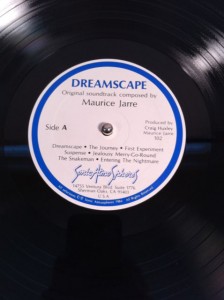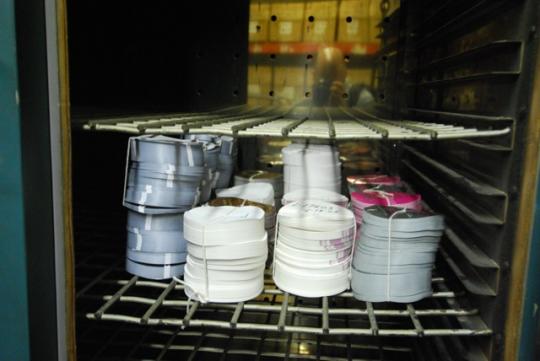 Turntabling gets plenty of questions about vinyl, record collecting, album titles, etc. A lot of them come when the Turntabling booth is set up at shows like Horrorhound Weekend, Cinema Wasteland, Capricon, etc. but from time to time the questions do come in by e-mail or the comments section.
Turntabling gets plenty of questions about vinyl, record collecting, album titles, etc. A lot of them come when the Turntabling booth is set up at shows like Horrorhound Weekend, Cinema Wasteland, Capricon, etc. but from time to time the questions do come in by e-mail or the comments section.
One recent question had to do with grading vinyl records. How does a newcomer to record buying and selling accurately judge the quality of a record or get a good idea of the record album’s condition as described for sale on eBay, Discogs.com or Etsy?
An Introduction To Vinyl Grading
Many record sellers use the Goldmine standard or a variation of it. Basically, Goldmine standard grading runs from Good, Very Good, and variations of VG (Very Good Plus, VG++. etc.) to Near Mint, and Mint.
Grading applies separately to album covers and the vinyl records themselves–or at least it SHOULD.
Some use an alternative system of vinyl grades like “Clean” or “Exceptionally Clean”, but some of us in the vinyl collecting and selling community distrust such descriptions because they seem to be trying to hide something.That is obviously not true in every case but for some buyers it can be a red flag.
No matter–nobody forces you to buy vinyl without inspecting it and if you’re uncomfortable with a seller’s grading system, don’t buy unless you can inspect.
Mint condition records are generally those that have never been played or seem to have never been played. A conservative grader is your friend when it comes to buying records on line, and those who claim that a vinyl record is “Mint” are usually saying it’s never been played or played once.
That does NOT mean “still sealed” but obviously sealed records are in Mint condition unless there’s been poor storage and handling.
Rather than take the time to run down the entire list of possible record conditions and hope it’s been communicated properly (we WILL do that in another post, this is a GETTING STARTED guide) there is an easier way for you to begin learning what record grading is all about.
Find a record store that sells used vinyl and lists the condition of that vinyl on a label on the sleeve. Study what that record store considers to be a “Good” condition record. Records in Good condition are often anything but.
Now compare what that store considers to be in Near Mint condition. See the vast difference? Once you get an idea of what the extremes are–again, according to THAT STORE–have a look at the Very Good condition records and compare them with the Near Mints.
You may begin to notice less difference in some cases between Very Good or Very Good Plus and Near Mint.
That’s because every record grader, like it or not, has their own pet peeves. Some will decide one vinyl LP that is considered Near Mint by one grader is actually Very Good Plus album because of a certain type of scratch, nick, or other type of wear.
Conservative record album graders–the fussy ones, the people who don’t give away Near Mint status very easily–are your best friend when it’s time to buy online. Near Mint records are not always pristine and perfect, but Very Good records aren’t always scratchy or obviously worn, either.
What you’re after is a better idea of the range of tolerances in your own purchasing and/or selling habits.
What does Very Good or VG+ mean to you the buyer when you play the record? Do you care if the album is NM or NM-?
Some do and some do not. It’s all down to personal preference. In another blog post (several, I expect) we’ll tackle the more in-depth complexities in record grading. In the meantime, the more records you study yourself, the better you’ll get at determining condition and whether you’re personally comfortable buying an album in the specified condition.
Don’t forget that this is NOT an exact science and your preferences have much to do with how you interpret the grading system. I’ll be writing much more on this subject in the weeks to come.
–Joe Wallace
